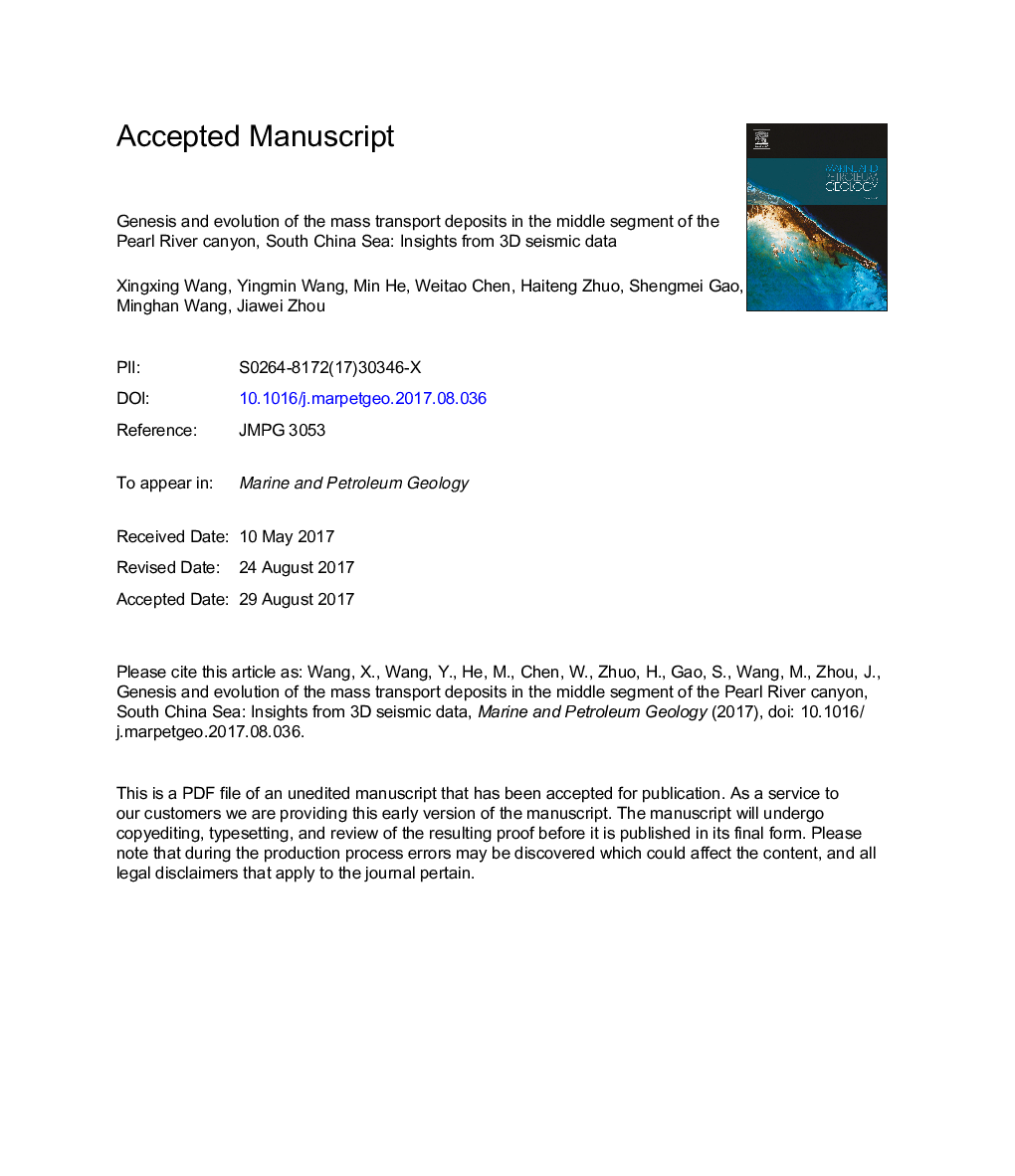| Article ID | Journal | Published Year | Pages | File Type |
|---|---|---|---|---|
| 8909336 | Marine and Petroleum Geology | 2017 | 72 Pages |
Abstract
Our results showed that slope canyon types, variations of sediment supply and the regional tectonic evolution exerted important controls on the generation and evolution of these MTDs. The eastern slope canyons with little slope fans have a steeper slope at the canyon mouths, resulting the northeastern MTDs to be prone to retrograde landwards. The change of shelf-channel system from un-incised type to incised type increased the sediment delivery efficiency, resulting in larger scale MTDs_1 in the Pearl River canyon. While the subsequent decrease in the number of incised shelf channels cut down the sediment delivery into the deep-water and reduced the younger MTDs' scale as well. The variation of sediment supply had a greater impact on the development of slope-attached MTDs. The rapid subsidence of Baiyun Sag and tectonic activities of Dongsha Rise during the Quaternary favored the occurrence of the submarine landslides on low gradient slopes in the study area. However, the weakening of the tectonic activities resulted the Quaternary MTDs' scale to be decreased upwards, especially for the southern slope-detached MTDs. The complex topography formed by the slope-attached MTDs has a greater potential to capture the subsequent turbidity currents from the shelf-edge deltas, bringing the generation of potential good turbidite reservoirs in the deep-water region.
Related Topics
Physical Sciences and Engineering
Earth and Planetary Sciences
Economic Geology
Authors
Xingxing Wang, Yingmin Wang, Min He, Weitao Chen, Haiteng Zhuo, Shengmei Gao, Minghan Wang, Jiawei Zhou,
